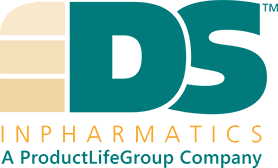Developing a new medication can cost over $1 billion, depending on the drug’s complexity and expenses accrued via unsuccessful studies. Considering these costs, an optimized regulatory process is required to ensure drug development procedures remain reliable, safety-orientated, and secure.
Chemistry, manufacturing, and controls (CMC) is a popular means of managing drug development, ensuring product quality, and maintaining effective manufacturing processes to reproduce drugs consistently to the standards established in the clinical setting.
This approach ensures that developed drugs remain unaltered as they progress from clinical trial to market availability while adhering to regulatory requirements set by authorities such as the United States Food and Drug Administration (FDA) and the European Medicines Agency.

Image Credit: Design Space InPharmatics LLC
Regulatory strategies and procedures for CMC drug development significantly differ when developing a drug product for veterinary medicine versus human medicine.
Veterinary medicine has unique CMC drug development requirements to accommodate the varied species encountered in this field. Animals are also unable to assist in patient compliance.
This article explores regulations and CMC drug development complexities and what they mean for veterinary medicine.
Accelerated pathways in veterinary medicine
The drug development process in veterinary medicine is faster than in human medicine, essentially starting at what would be considered Phase III in human health.
This accelerated pathway requires an extremely confident and robust manufacturing process. Manufacturers must determine the most appropriate granulation or direct compression methods to make liquids, granules, feed, or other dosage forms.
Once the drug enters clinical trials, any changes to the manufacturing process could necessitate restarting clinical trials or running bridging pharmacokinetic studies, making initial decisions critical. Despite this streamlined pathway, preclinical safety data is still required before pivotal veterinary studies.
Smaller market size and its implications
The market for veterinary drugs is generally smaller than human pharmaceuticals, meaning relatively fewer resources and investments are allocated to CMC drug development in the veterinary sector.
Companies in veterinary drug development must typically work within tighter budgets and with fewer resources, limiting the depth and extent of potential CMC studies.
Extensive resources are available to address the complex demands of CMC studies in human drug development. However, veterinary drug firms must perform these tasks with more fiscal prudence and strategic planning.
The regulatory landscape
The overarching regulatory framework for CMC drug development is consistent between veterinary and human drugs, but there are subtle differences in their requirements and review processes.
The Center for Drug Evaluation and Research in the U.S. focuses on human medicines, while the FDA’s Center for Veterinary Medicine (CVM) oversees veterinary drugs.
These specialized centers accommodate the specific requirements of their respective areas. The CVM may prioritize drug safety and efficacy unique to animal health, expanding these considerations to human health in food-producing animals and impacting the CMC drug development strategy for veterinary products.
Formulation challenges
One notable difference in veterinary drug development lies in product formulation. Veterinary medicines must be palatable and easy to administer to various animal species, each with unique characteristics and requirements. This need makes the CMC drug development process more complex.
Formulations must adhere to strict quality and efficacy standards while meeting the challenges of administering drugs to animals.
Formulations must:
- Be mixed with food easily
- Withstand numerous environmental conditions
- Be palatable to various species
These considerations are not typical of human drug formulation. Dogs, for example, may refuse to take unpalatable medications, affecting patient compliance. Human health deals with one species, while veterinary health includes many species requiring specific testing.
Preclinical and clinical trials
Veterinary drug development differs from human medicine regarding the scale and scope of clinical trials. Veterinary trials are generally smaller, determined by market size and the feasibility of performing studies across various animal populations.
This difference can affect the depth and volume of CMC data needed to support a drug application.
Veterinary trials commence directly with inpatient clinical trials, parallel to a Phase III approach in human terms. Preclinical safety data generated for one species may be translated to another. However, a margin-of-safety study with the formulated product is still necessary before conducting pivotal studies.
Specific considerations in veterinary medicine
While genotoxic impurities are a major concern in human medicine, they are less relevant in veterinary medicine due to animals’ shorter lifespans.
Excipient selection is also important because some excipients that are safe for humans can be toxic to animals. Excipients must be carefully selected and validated for each species likely to receive the drug.
Numerous challenges must be considered during CMC drug development in veterinary medicine, including specific regulatory demands, relatively small market size, and formulation complexities.
As the pharmaceutical industry advances, any company aiming to innovate and succeed in the veterinary drug market should understand and adapt to these differences.
The future of veterinary medication depends on an enhanced CMC drug development process. This process must be optimized to accommodate complex medications, maintain efficient CMC development timelines, and leverage innovative new technologies such as automation and data analytics.
These strategies will help ensure that veterinary drugs remain safe, effective, and meet high-quality standards.
Acknowledgments
Produced from materials originally authored by Meranda Parascandola from Design Space InPharmatics LLC.
About Design Space InPharmatics LLC
DSI provides regulatory, technical, and project management consulting services to healthcare product companies that manufacture and/or market pharmaceuticals, biopharmaceuticals, and cellular and gene therapy products.
Since 2007 we have provided our clients with innovative strategies and exceptional quality work products intended to enhance product development, approval, and marketing presence.
Whether advocating CMC strategy, directing CMC operations, or developing CMC submission content that represents the best interests of emerging biotech, we focus on the critical CMC issues and build programs that enhance development.
Sponsored Content Policy: News-Medical.net publishes articles and related content that may be derived from sources where we have existing commercial relationships, provided such content adds value to the core editorial ethos of News-Medical.Net which is to educate and inform site visitors interested in medical research, science, medical devices and treatments.